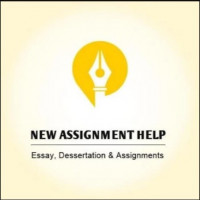The Impact of Language Techniques in Academic Writing

Strong 8k brings an ultra-HD IPTV experience to your living room and your pocket.
Academic writing is a cornerstone of education, offering a platform for scholars, researchers, and students to communicate ideas and knowledge effectively. While clarity and structure are essential, the strategic use of language techniques can significantly enhance the quality of academic writing. These techniques enable writers to craft compelling arguments, engage readers, and convey complex ideas with precision. This article delves into the impact of language techniques on academic writing, emphasizing their importance and providing insights into their effective use.
Understanding Language Techniques in Academic Writing
Language techniques refer to the deliberate use of linguistic tools to convey meaning, emphasize points, and evoke responses from readers. In academic writing, these techniques serve to:
Clarify Ideas: Techniques like definition, analogy, and classification ensure that concepts are explained clearly.
Engage Readers: The use of rhetorical questions, parallel structures, and repetition draws readers into the argument.
Enhance Persuasion: Strategies such as evidence-based reasoning and the appeal to ethos, pathos, and logos strengthen arguments.
Key Language Techniques and Their Applications
1. Formal Tone and Diction
Academic writing demands a formal tone to establish credibility and professionalism. Using precise vocabulary and avoiding colloquialisms demonstrates a writer's expertise. For instance:
Instead of saying, "This paper talks about...," use "This paper examines..." to convey authority.
2. Cohesion and Coherence
Cohesion ensures that ideas flow logically, while coherence ensures that the writing is meaningful as a whole. Techniques like linking words (e.g., moreover, however) and transitional phrases help maintain a smooth narrative. Example:
"The study highlights significant findings. Moreover, it suggests future directions for research."
3. Use of Rhetorical Questions
Rhetorical questions engage readers by prompting them to think critically. For instance:
"How can educators ensure equitable access to quality education?" encourages reflection and frames the discussion.
4. Metaphors and Analogies
Metaphors and analogies simplify complex ideas by relating them to familiar concepts. For example:
"The neuron acts like a relay station, transmitting signals to different parts of the body."
5. Evidence-Based Reasoning
Presenting evidence supports claims and enhances credibility. Data, statistics, and citations are powerful tools in academic writing. Example:
"According to Smith (2020), the implementation of language techniques improves comprehension by 25%."
6. Parallel Structures
Parallelism creates rhythm and balance in writing, making it more engaging. Example:
"The study aims to analyze trends, identify challenges, and propose solutions."
7. Quotations and Citations
Quotations lend authority to arguments and demonstrate research depth. Proper citation formats (APA, MLA, etc.) are crucial in academic contexts.
Benefits of Language Techniques in Academic Writing
1. Improved Readability
The judicious use of language techniques enhances readability by breaking down complex information into digestible segments. For instance, using bullet points or numbered lists improves comprehension.
2. Enhanced Engagement
Language techniques such as storytelling or rhetorical questions make academic writing more engaging. They capture the reader's attention and sustain interest throughout the text.
3. Stronger Persuasion
Persuasion is a vital aspect of academic writing, especially in argumentative essays and research proposals. Techniques like logical reasoning and evidence-based arguments strengthen persuasion.
4. Clearer Communication
Language techniques simplify intricate ideas, making them accessible to a broader audience. For instance, analogies can help non-experts grasp technical concepts.
Challenges in Using Language Techniques
While language techniques can elevate academic writing, their misuse may lead to ambiguity or redundancy. Common challenges include:
Overuse of Techniques: Excessive use of rhetorical questions or metaphors may detract from the main argument.
Inappropriate Tone: A tone that is too casual or overly complex can alienate readers.
Lack of Precision: Misusing techniques like analogies can lead to misinterpretation.
Tips for Effectively Incorporating Language Techniques
To maximize the impact of language techniques, writers should:
Understand the Audience: Tailor the language to the knowledge level and expectations of the audience.
Practice Clarity: Use techniques sparingly to maintain clarity and focus.
Seek Feedback: Peer reviews can help identify areas where techniques are overused or ineffective.
Follow Academic Standards: Adhere to guidelines for tone, structure, and citation formats.
Conclusion
The strategic use of language techniques in academic writing can transform a simple paper into a compelling and persuasive piece. By enhancing clarity, engagement, and persuasion, these techniques play a crucial role in effective communication. Writers who master these tools not only elevate their academic work but also contribute meaningfully to their fields of study.
Note: IndiBlogHub features both user-submitted and editorial content. We do not verify third-party contributions. Read our Disclaimer and Privacy Policyfor details.







